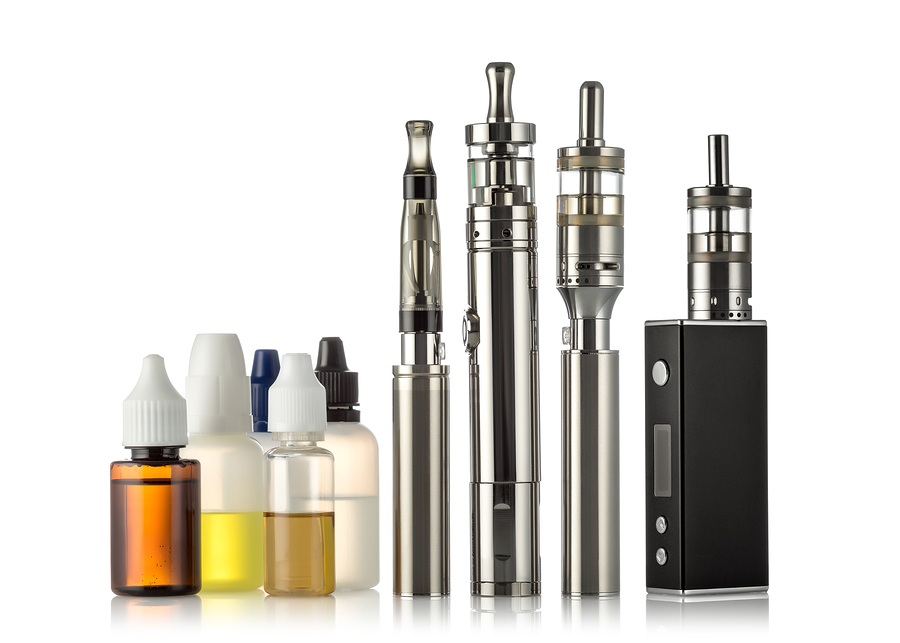
Reading Around… E-cigarettes
What are e-cigarettes?
Description of e-cigarettes (ECs) from the Public Health England Evidence Report Update (McNeill et al. 2015).
‘ECs use battery power to heat an element to disperse a solution that usually contains nicotine. The dispersion of the solution leads to the creation of an aerosol that can be inhaled by the user. The heated solution typically contains propylene glycol or glycerine, water, nicotine, and flavourings. ECs do not contain tobacco, do not create smoke and do not rely on combustion.’ (Pg.15)
Key papers and documents
1) Cochrane review examining evidence for smoking cessation and harm examined (McRobbie et al 2014)
- The efficacy of ECs in helping smokers to achieve long-term abstinence.

- The efficacy of ECs in helping participants quit by 50%.
- The occurrence of adverse events associated with EC use.
Results
- 13 studies were included (11 RCTs, 2 cohort studies)
- Participants who used an EC with nicotine were more likely to abstain from smoking for at least 6 months compared to those who used a placebo EC (9% vs 4%).
- A higher number of people were able to reduce smoking by at least 50% compared to those using placebo ECs (36% vs 27%).
- No adverse events were reported in any of the trials.
Interpretations
The results from this review suggest that people using ECs with nicotine are more likely to stop smoking long-term than those who use ECs without nicotine. People who use EC’s with nicotine are also more likely to reduce the amount they smoke by at least half compared to people who use an EC without nicotine. People who use ECs short-term (for two years or less) did not have an increased health risk compared to people who did not use ECs. However, due to low numbers of studies, the authors rated these findings as imprecise and likely to be affected by future studies.
2) Public Health England Evidence Report Update (McNeill et al. 2015)
This document provides the most recent evidence and policy implications for ECs. It provides the most comprehensive overview of EC issues.
Key messages from report:
Licensing of EC’s:
- ECs are not currently licensed for use as a tobacco replacement therapy, and subsequently cannot be prescribed as a medicinal product.
- From 2016 the Medicines and Healthcare Products Regulatory Agency (MHRA) will regulate all e-cigarettes containing more than 20mg/ml nicotine making them available for smoking cessation support through healthcare providers.
Prevalence of EC use
- Approximately 1 in 20 adults use ECs: around 60% of these are existing smokers.
- EC use among those who have never smoked is very low: around 0.2%.
- Regular EC use among youths is low (approximately 2% using monthly).
- Smoking cigarettes continues to decline in adults and youths, suggesting ECs do not act as a gateway to cigarette smoking.
Safety and harm issues
- Despite negative media headlines, evidence suggests that smoking ECs is not harmful to health (see above).
- Using e-cigarettes is 95% safer than smoking cigarettes (see Nutt et al. 2014).
Summary of report
E – cigarettes are 95% less harmful than cigarettes and have not demonstrated adverse health effects among users (although long-term effects are unknown). There is no evidence that ECs encourage youths who have never smoked to take up smoking. ECs can help people stop and reduce their smoking and could be used as a nicotine replacement therapy. Upcoming licensing regulations will allow for ECs to be recommended by healthcare providers.
3) National Institute for Health and Care Excellence (NICE) guidance. Tobacco: harm-reduction approaches to smoking. NICE guidelines PH45
- Does not currently recommend ECs as they are not licensed but will update their advice once ECs are officially regulated.
Further resources
- The original PHE evidence report (Britton & Bogdanovica, 2014).
- A review of E-cigarette policy
The opinions expressed in this post and podcast reflect the views of the author(s) and do not necessarily represent the opinions or official positions of the SSA.
The SSA does not endorse or guarantee the accuracy of the information in external sources or links and accepts no responsibility or liability for any consequences arising from the use of such information.